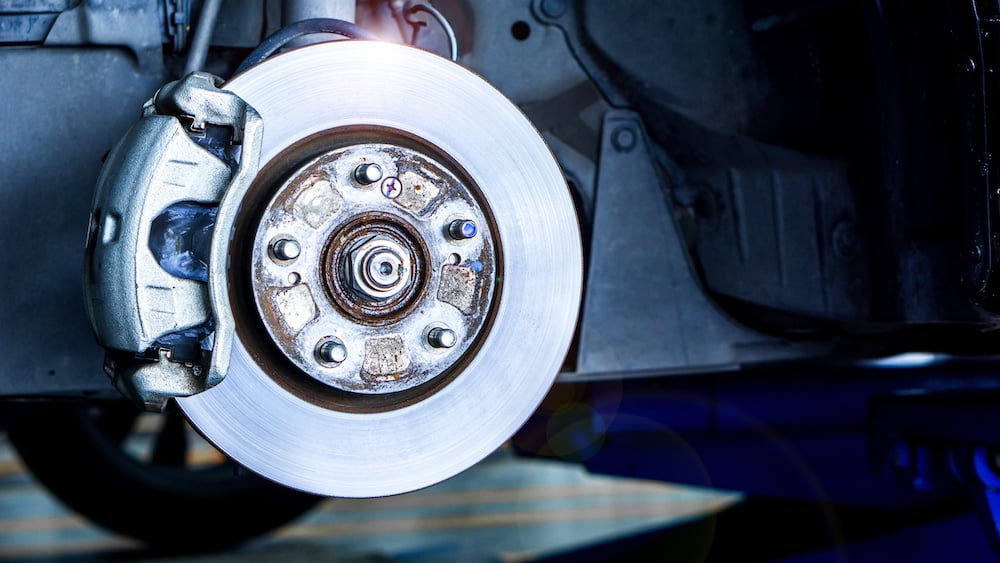One of the most important components of our vehicles is also one of the most neglected. We use it every time we get into the vehicle, and expect it to function properly when we need it the most. However, this component is often taken for granted. What is this critical component? Your vehicle’s brakes. Until there is a real problem, we rarely think about our brakes and what we can do to ensure they are kept in good working order. To better understand your brakes, we will review some of the basics of the braking system and typical issues you might encounter.
The Braking System
The part of your brakes that you are probably most familiar with is your brake pedal. But what exactly happens when you press down on the brake pedal? How does your foot pressure turn into braking power?
- When you use your vehicle’s brakes by pressing on the pedal, brake fluid is pushed through tubes to assist with brake components in stopping your vehicle.
- Connected to your wheels are rotors, or metallic discs, that rotate in motion along with your wheel.
- Connected to the rotors on either side, are the brake These are also metallic components that resemble clamps.
- The calipers clamp the brake pads that are connected to each caliper to slow the vehicle down, or ultimately stop it in motion.
While the braking process is highly generalized in the above description, this is basically what happens to keep you and your vehicle occupants safe. If something goes wrong with any of these components, it can lead to improper functioning or failure of your brakes.
Braking System Issues
Like many other components of our vehicles, brake components are subjected to friction from motion, excessive heat, and wear and tear. These factors are what contribute to potential issues with our brakes.
| Issue | Things to look for... |
|---|---|
| Brake Fluid Leak | - Fluid stains on the ground near the wheels - A feeling of "cushion" or air when pressing down the brake pedal |
| Worn Rotors | - Noise and vibration during braking - Visible grooves on the rotor |
| Worn or Dirty Brake Pads | You hear loud squealing sounds when braking |
| Worn Calipers | - Vehicle pulls to one side - Brake fluid leaks |
If you notice any irregularities with your brakes, it is definitely advisable to get your vehicle in for a full brake inspection. Brake issues do not go away – they just worsen over time.
Servicing The Braking System
Whether you tackle this on your own or take your vehicle to a qualified service professional like Morristown, NJ’s, Shade Tree Garage, there are a few key ways to service your braking system:
- Examine Brake Pads and Rotors: You should check your brake pads and rotors for wear every 12,000 miles. This may vary depending on your driving habits and vehicle type. Because brake pads are subjected to friction and heat, they can wear down over time and reduce your braking performance.
- Brake Fluid Flush: Brake fluid should be drained and replaced every 25,000 miles. Brake fluid gathers moisture over time that can contribute to poor performance and corrosion of brake parts. If brake fluid is milky in appearance, it is time for replacement.
- Brake Line Bleeding: The tubes that carry your brake fluid can sometimes accumulate excess air. Trapped air in your brake line can diminish the effectiveness of your braking system. Bleeding the brake lines involves removing the air through a bleeder valve. Brake line bleeding is not necessary as often and can be done every few years.
Don’t let your brakes go unnoticed. If you suspect you may have some braking system issues, contact us today to schedule a full braking system service.

